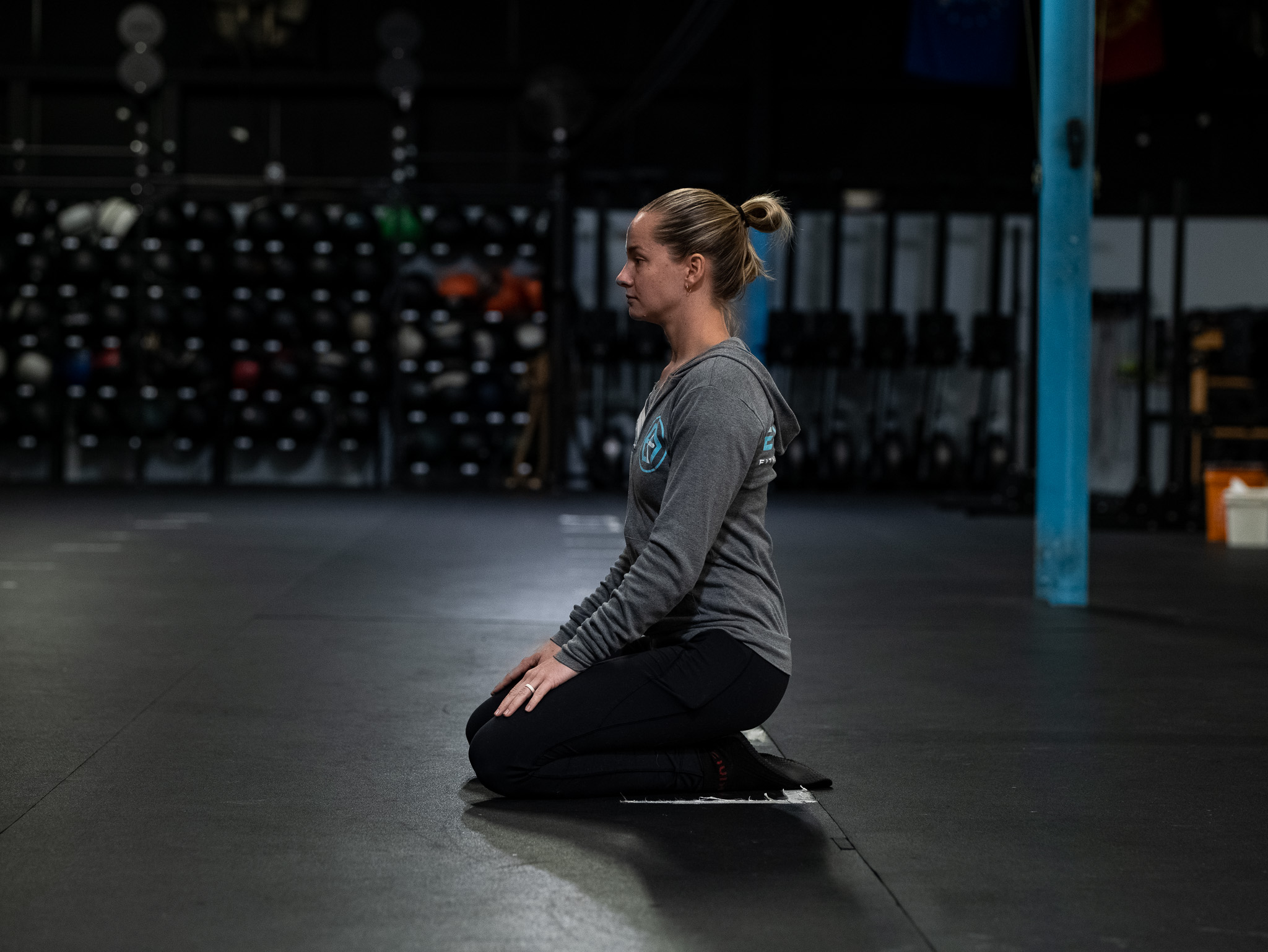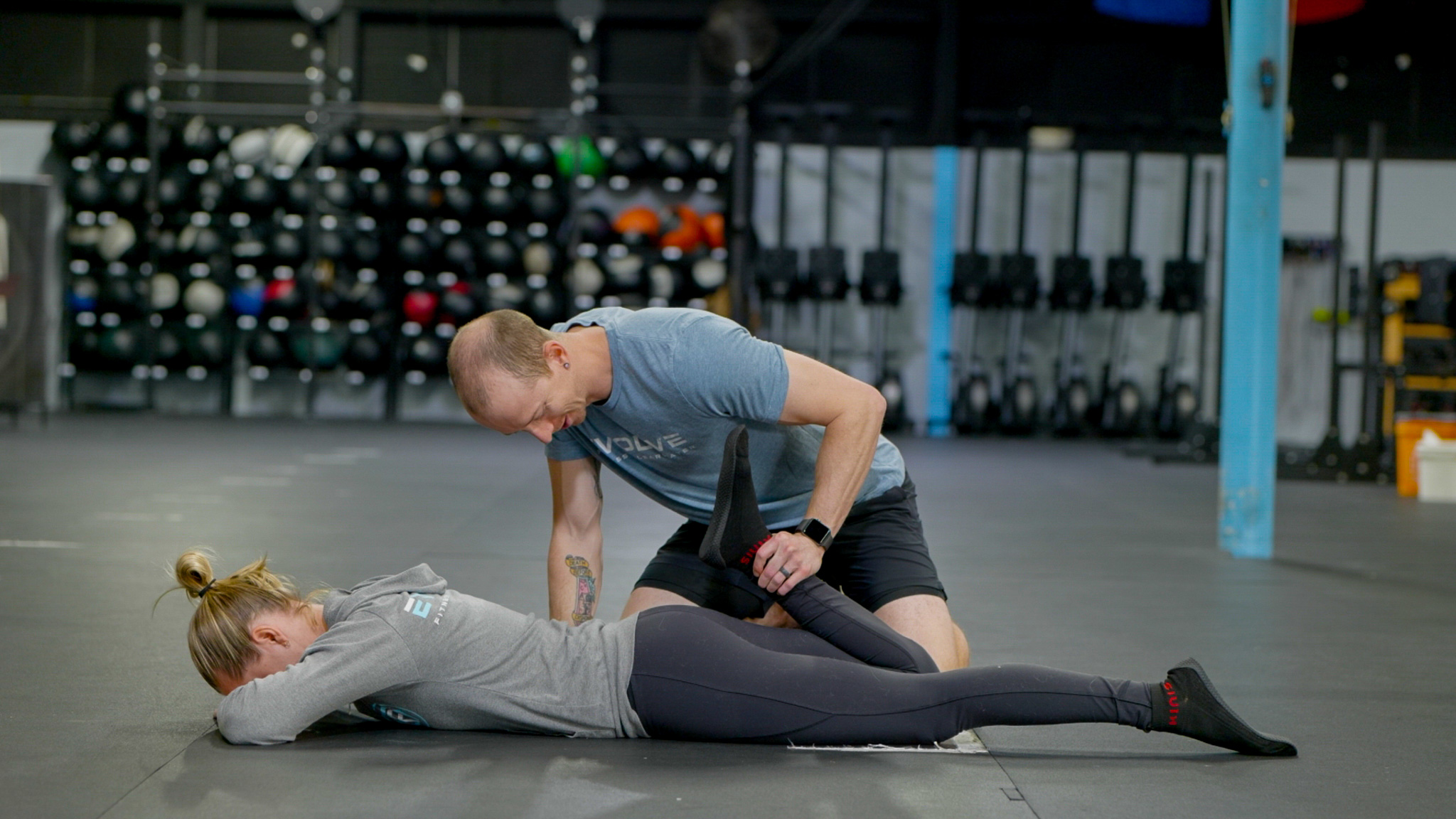| We’ve got a saying that goes “assess, don’t guess”. The reason we think assessing is so important is that what seems to be someone’s problem at first glance, might only be a symptom when we look closer. Here’s a simple example… If you came to us with knee pain, one of the first things we would do is look at your mobility and flexibility both above and below the knee (ankles and hips). Let’s look at the first assessment we would do, the kneeling butt-to-heel assessment. This test is directly looking at the passive range of motion of the knee. If you could get your butt all the way to your heels without pain, you’ve got the full range of motion at the knee. Great!  This second test we would do is called the prone heel-to-butt test. With this test, we’re still looking at the knee range of motion, but this time, we’re also looking at the hip range of motion. Notice how in the first test the hips were flexed and in this test the hips are extended.  If you had full range of motion in the first test but missed the range of motion in the second test, the knee pain likely isn’t a knee problem. It’s actually an issue in the hips! Proper assessments help us get a much clearer picture of the way your body moves and what may cause its issues. What’s really cool is that when assessments are done properly, coaches can often see what movements might cause you pain or issues BEFORE you ever even do those movements or have pain. Find yourself a professional who assesses you head to toe, even if you don’t have pain. Stay Active, Evolve Fitness Clearwater |
Skip to content
Fill out the form below to get started
Take the first step towards getting the results that you want!
